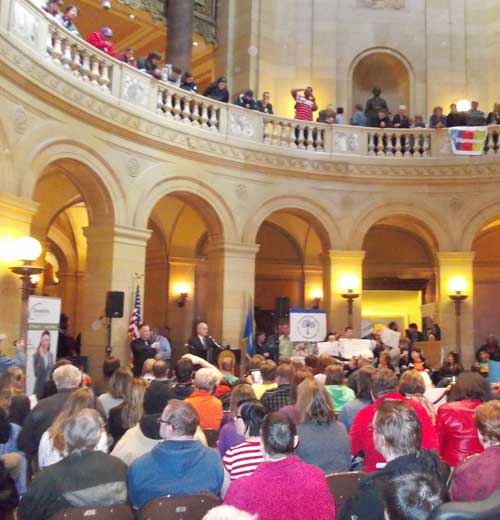Key legislative achievements for disability services in 2019
Help for direct support professional (DSP) staff wages, more frequent rate updates and the preservation of a rate factor that accounts for participant absences were key accomplishments at the State Capitol this session for disability service providers and the individuals (participants) they serve.
These and more were part of the 2019 Health and Human Services Omnibus Finance Bill, which was passed by the Legislature and signed into law by the governor at the end of May.
“We didn’t get all that we had hoped for, but your advocacy made a difference,” said Julie Johnson, president of the Minnesota Organization for Habilitation and Rehabilitation (MOHR).
Front and center is a welcomed addition to the Disability Waiver Rate System (DWRS) framework to help increase staff wages. A Competitive Workforce Factor (CWF) rate increase of 4.7 percent was approved. It translates to a service reimbursement rate increase of 4 percent, or $44 million a year in total, according to a summary report from Fredrikson & Byron. This helps to address the negative impacts of a 7 percent cut in 2018.
The factor is a start to address a pay differential of a little more than 17 percent between direct support professionals and those in comparable occupations. The Minnesota Department of Human Services conducted a study to determine the gap.
The CWF awaits federal approval. Plans are to implement it on January 1, 2020, but delayed federal approval could push it out further. There are also reporting requirements for service providers.
In other good news, the timing for automatic rate updates paid to service providers was changed from every five years to two years. The first begins on July 1, 2022, using 30-month old wage data. Future updates will be based on two years of “component value changes,” according to the lobbying firm.

The third significant accomplishment was preventive in nature, explains Anni Simons, government relations specialist with Fredrikson and Byron. A “very serious proposal” that would have altered a rate factor in the DWRS that protects day service providers from lost revenue due to participant absences was not adopted.
The technical term is the Absence and Utilization Factor. Earlier legislation increased the factor from 3.9 percent to 9.4 percent on January 1, 2019. This resulted in a 6 percent rate increase for providers. The governor had requested a reduction in this rate from 9.4 percent to 4.5 percent.
Please view Johnson’s session recap column. Additionally, many more details and smaller law changes are available to MOHR members in the Minnesota Legislative Session Summary from Fredrikson and Byron.